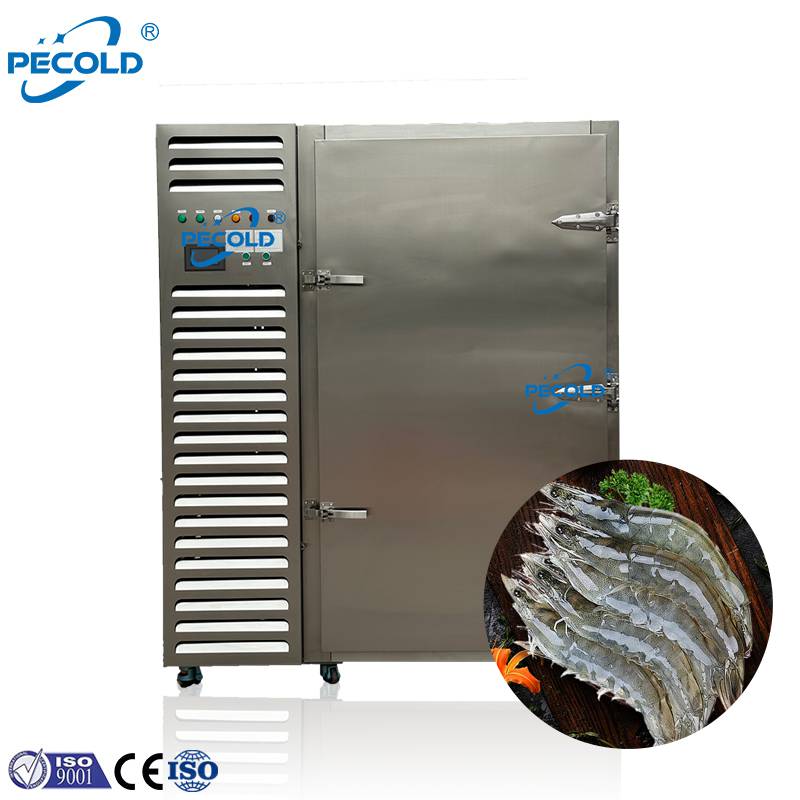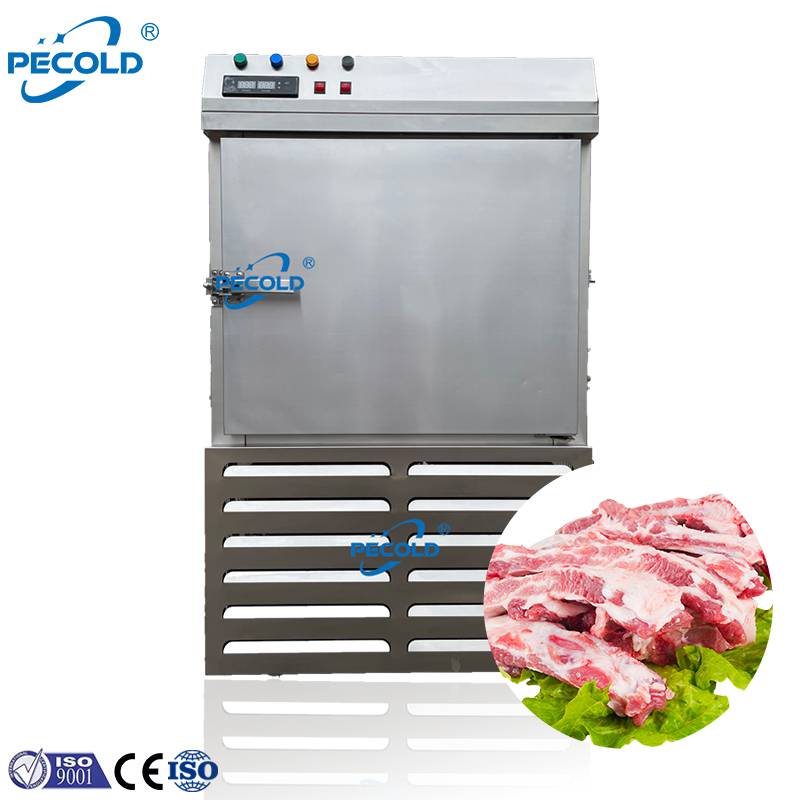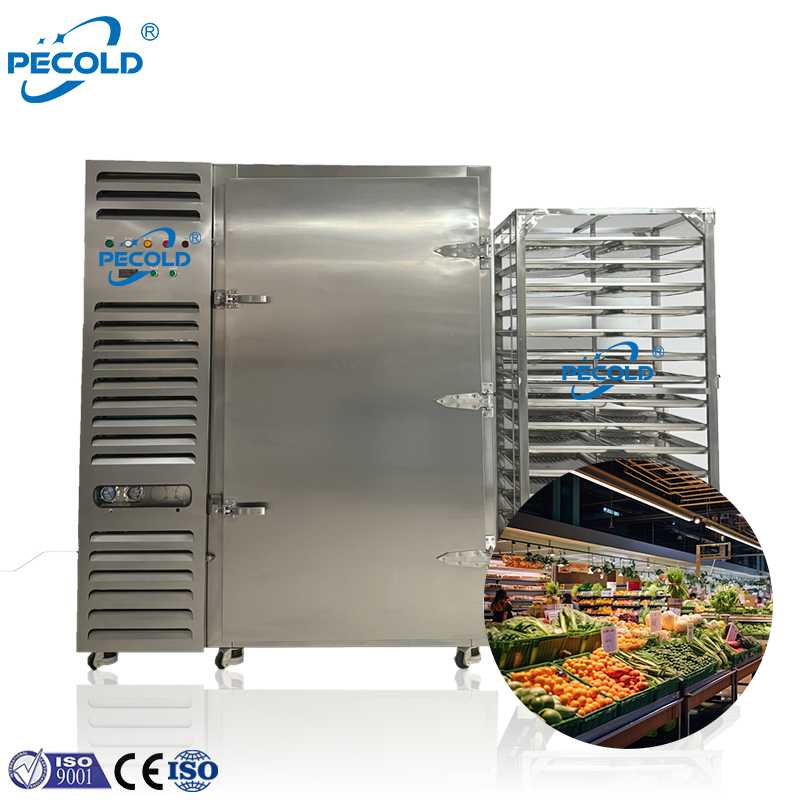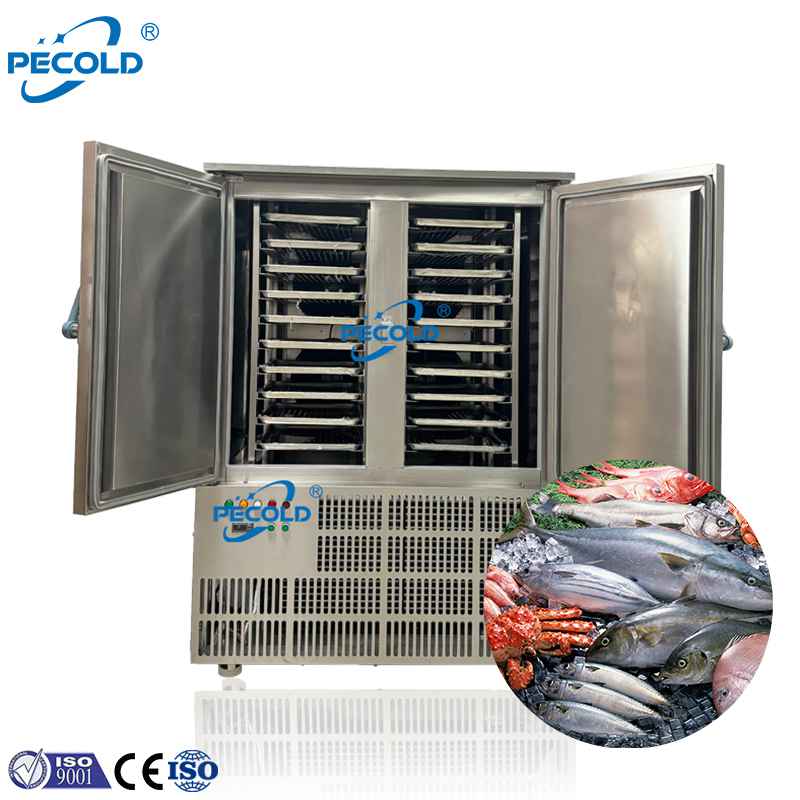Home » How to Operate a Blast Freezer Safely
How to Operate a Blast Freezer Safely
How to Operate a Blast Freezer Safely: Essential Tips for Optimal Performance

Blast freezers are critical for industries requiring rapid freezing, such as food processing, pharmaceuticals, and biotechnology. However, improper operation can lead to safety hazards, equipment damage, or compromised product quality. As a trusted provider of industrial cooling solutions, Pecold combines advanced technology with user-centric design in its blast freezers. In this guide, we’ll explore practical steps to operate a blast freezer safely while highlighting features that make Pecold units a reliable choice.
1. Pre-Operation Preparations
a. Verify Installation Requirements
Ensure your blast freezer is installed in a well-ventilated area with sufficient space for airflow. Pecold blast freezers, like the CYLD-1100L model, require specific voltage inputs (e.g., 380V 50Hz for larger units). Always match the voltage to the specifications (refer to the product manual or technical parameters) to prevent electrical hazards.
b. Inspect the Environment
Avoid placing the unit near heat sources or in direct sunlight. Pecold’s stainless steel surface ensures durability, but extreme ambient temperatures can strain the compressor.
c. Check Refrigerant Levels
Pecold blast freezers use R404A refrigerant (or R404A-R23 blends), known for its efficiency and low environmental impact. Confirm there are no leaks before operation, as improper refrigerant levels can reduce cooling efficiency or damage components.
2. Safe Operation Practices
a. Load Items Correctly
Avoid Overloading: Overcrowding blocks airflow, leading to uneven freezing. Adhere to the recommended weight limits to maintain performance.
Use Appropriate Trays: Ensure trays are compatible with the freezer’s dimensions.
b. Set Temperatures Properly
Pecold units can reach ultra-low temperatures of -40°C to -80°C (customizable). Gradually lower the temperature to the desired setting instead of abrupt adjustments, which stress the compressor.
c. Monitor Power Consumption
High-power models like the CYLD-1400L (8kW) require stable electrical circuits. Use surge protectors to prevent voltage fluctuations.
3. Routine Maintenance for Longevity
a. Clean Regularly
Dust accumulation on the air cooling system reduces efficiency. Wipe the stainless steel surface and condenser coils monthly.
b. Inspect Compressor and Fans
Pecold blast freezers use international-brand compressors for fast freezing. Schedule professional inspections annually to ensure optimal function.
c. Check Door Seals
Damaged seals allow cold air leakage, increasing energy use. Test seals by closing the door on a piece of paper—if it slides out easily, replace the seal.
4. Emergency Protocols
Power Failure: If the unit stops abruptly, avoid reopening the door immediately to retain cold air. Pecold’s thick insulation (10-12cm trays) buys time for repairs.
Unusual Noises: While Pecold units are designed for low noise, grinding sounds may indicate motor issues. Turn off the freezer and contact a technician.
Why Choose Pecold Blast Freezers?
Pecold prioritizes safety and efficiency:
CE Certification: Complies with EU safety standards.
Customizable Temperatures: Adjust settings from -40°C to -80°C for specialized needs.
Durable Design: Stainless steel construction and air cooling technology ensure reliability.
Conclusion
Safe blast freezer operation hinges on proper setup, mindful usage, and regular upkeep. By following these guidelines, you’ll maximize equipment lifespan and product quality. For businesses seeking dependable solutions, Pecold’s range—from compact CYLD-178L to industrial CYLD-1400L—offers versatility backed by rigorous testing.
References: Technical specifications sourced from Pecold’s official product documentation.
GET IN TOUCH NOW?
NEWSLETTER
Contact
- Sales Managers: Kevin Weng
- WhatsApp: +86 133 9647 8299
- Email: [email protected]
- Tel Number: 0086 133 9647 8299
- Working Time: from 09:00 to 18:00
- Address: Foshan, Guangdong, China
Product




